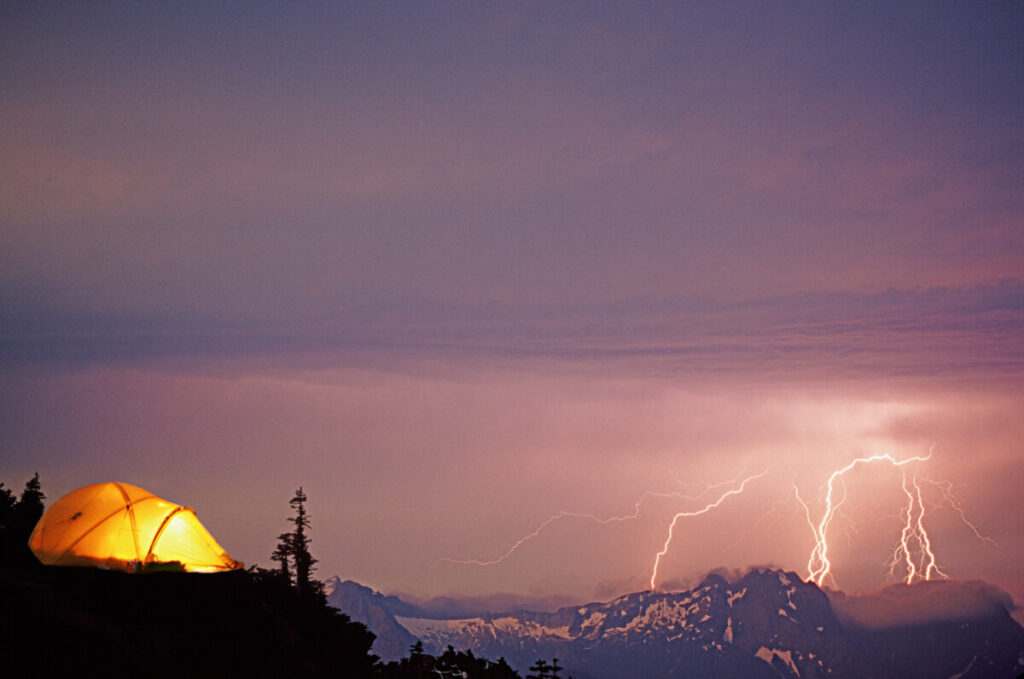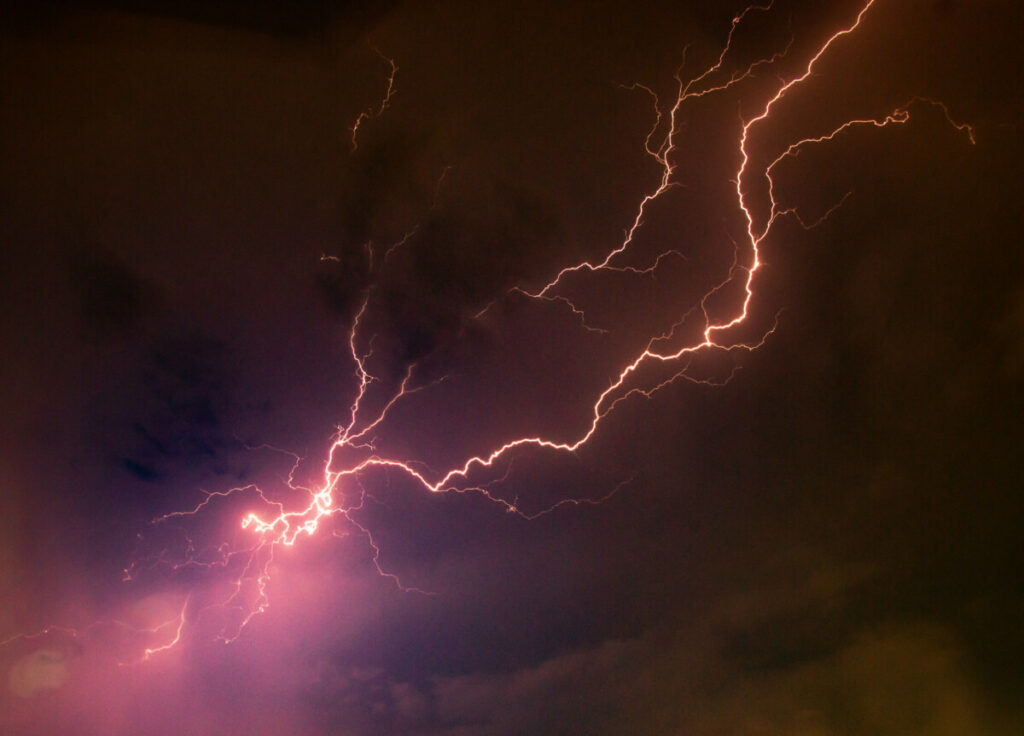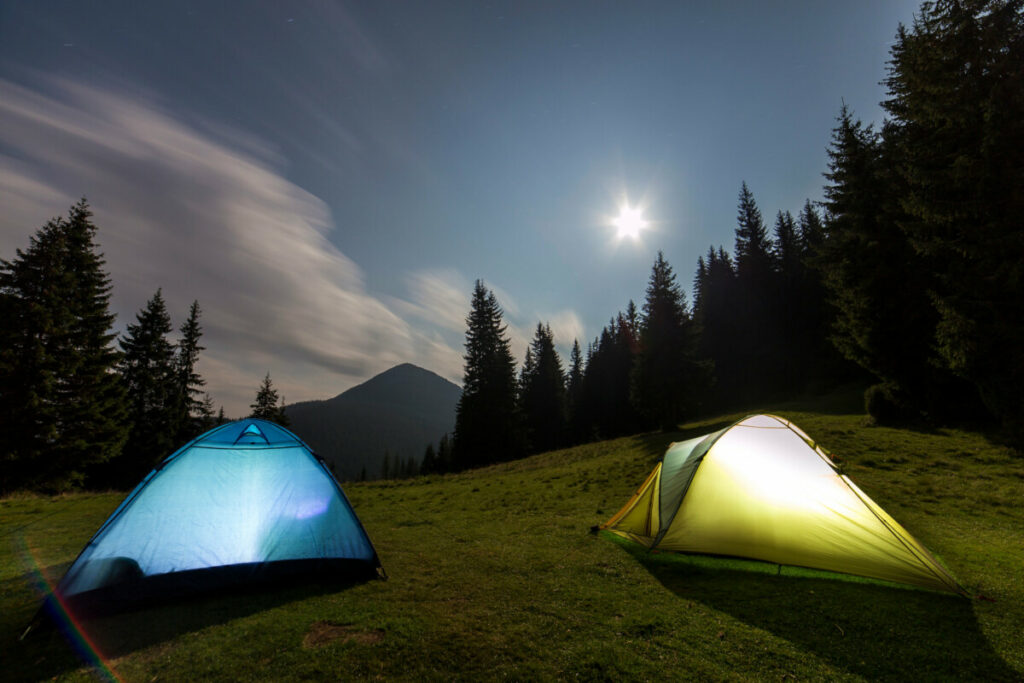
You’ve planned, prepared, and set out on your dream camping trip. Hiking into the wilderness you enjoy the scenery around you before stopping and pitching your tent for the night. Later that night you are awakened by a thunderstorm and think to yourself, will my tent attract lightning?
Tents, or other objects, do not attract lightning. While lightning is erratic it tends to strike the tallest object in an area. If a tent is pitched on a ridge or in an open area the chances of it being hit by lightning are higher than if it is placed in a more secure location.
While there is a lot that we still need to learn about lightning there are some basic guidelines that you can follow to keep yourself and others safe. Read on below to learn more about what you can do when lightning strikes.
Where Does Lightning Strike
To help us to understand where lightning will strike we need to understand what lightning is. Electricity has positive and negative charges. In storms, the negative charge will start to build up in the clouds. As this charge builds up an equal positive charge begins to gather on the ground below the storm. While these charges want to connect to one another the air becomes a barrier keeping the clouds and ground separated.
An easy way to think about this is by filling up a water balloon in the sink. The water filling the balloon is the negative charge, the balloon is the air, and the sink is the ground. The water wants to fall to the sink but is stopped by the balloon. As the balloon is filled it begins to stretch. Eventually, it bursts, sending the water crashing down into the sink below. Like this example as the charges in the ground and clouds build up it becomes harder for the air to keep them separate. Eventually, the charges break through the air and meet causing a lightning strike.
While lighting can be hard to predict we know that there are two pieces that connect to create a lightning strike. The negative charge jumps through the air to get closer to the ground. From the ground comes a positive extension upward to meet the negative piece. This positive extension or “streamer” can come from the ground but often forms out of an object. In this case, this would be your tent.
The assumption you might have is that as long as you are not the tallest object around that lightning will not strike you. The National Severe Storms Laboratory provides an answer to this question; does lightning always strike the tallest object? Their answer begins with a reminder to never say always when talking about lightning. Lightning will usually strike tall objects because they are the most likely to produce upward streamers. Because lightning is so unpredictable you should always try and seek shelter if you can.

What To Do if you Have a Shelter
The best thing to do to prepare for a lightning strike is to find shelter. While camping with a tent you may not have access to this type of shelter, but you should find it if possible. In a resource provided to those camping, Weather.gov explains the two types of shelter that you should look for. These are either an enclosed vehicle with a metal roof or a modern enclosed structure. These are the safest places to be during a thunderstorm.
Most homes and businesses have lightning rods that direct lightning strikes away from you and into the ground. Vehicles have a metal frame that draws lightning around the interior instead of through the middle. Unenclosed buildings like pavilions are not suitable places to shelter. If you are near one of these two types of shelter you should go there immediately when you hear thunder. If you can hear thunder from a storm, you are close enough to the storm to be struck by lightning.
If sheltering in one of these locations avoid touching metal or items wired into a structure. These can carry a charge if lightning were to strike. While sheltering here pay attention to each time you hear thunder. You shouldn’t leave the shelter until thirty minutes after the last thunder you hear.
What To Do if you Don’t Have a Shelter
If you don’t have access to one of these types of shelters there are still steps that you can take to keep yourself safe. Like above, if you see a storm and hear thunder you are close enough to be hit by lightning. If you are in an exposed position like on a ridge or peak then try and move to lower ground. Avoid being the tallest object in an area or being next to the tallest object. These are the most likely places that lightning will strike.
If you are in your tent and it is in a relatively secure place it is probably best to shelter in your tent. Staying in your tent will keep you dry if you are in the middle of a storm. You should not lie down while in your tent. The biggest threat of death from lightning doesn’t come from a direct strike, but from ground current, accounting for over half of the deaths according to Weather.gov. Ground current is excess electricity from a nearby lightning strike spreading through the ground. Lying down exposes more of your body to the ground and makes it more likely you will be hurt or killed by the ground current.
Instead of lying down you should stand with your feet together or sit on a pad or bag (still keeping your feet together). This minimizes your contact with the ground. You might be wondering if you should use metal tent poles or nonconducting poles like plastic or carbon fiber. As one poster explained on a forum, the lightning had to travel through thousands of feet of nonconducting air, what your poles are made out of isn’t likely going to stop it.
Referring back to our example above, imagine if just before the water balloon burst you stretched out a paper towel below it. The water will tear through the paper. Your best bet is to find a shelter or prepare for a ground current, not to worry about whether your tent will attract lightning.


